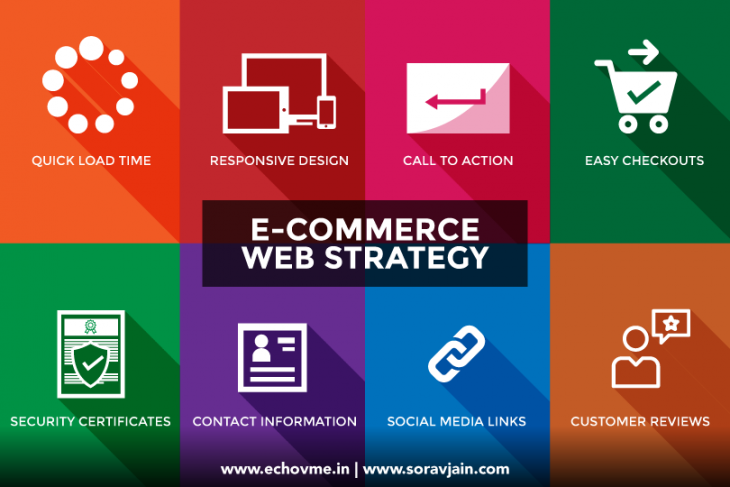MBA in Nonprofit Organization Management offers a unique blend of business acumen and social impact. This program equips graduates with the skills to effectively manage and lead organizations dedicated to positive change, tackling challenges ranging from fundraising and resource allocation to ethical leadership and impact measurement. It’s not just about balancing budgets; it’s about making a tangible difference in the world.
This guide delves into the curriculum, career prospects, and ethical considerations of pursuing an MBA in Nonprofit Organization Management. We’ll explore the specific skills employers value, compare different program options, and discuss the rewarding, yet challenging, realities of working in the nonprofit sector. We’ll also address the crucial role of technology and data-driven decision making in modern nonprofit management.
Program Overview
An MBA in Nonprofit Organization Management is a specialized master’s degree designed to equip professionals with the business acumen and strategic thinking necessary to lead and manage nonprofit organizations effectively. This program blends traditional MBA coursework with a deep dive into the unique challenges and opportunities within the nonprofit sector. It’s ideal for individuals aiming for leadership roles in charities, NGOs, foundations, and other mission-driven organizations.
Typical Curriculum
The curriculum typically includes a core of business fundamentals such as finance, accounting, marketing, and strategic management. However, it significantly diverges from a traditional MBA by incorporating specialized courses focusing on nonprofit-specific topics. These might include fundraising and development, grant writing, program evaluation, social impact measurement, volunteer management, advocacy and public policy, ethical leadership in the nonprofit sector, and legal and regulatory frameworks for nonprofits.
Students often engage in case studies of real-world nonprofit organizations, allowing them to apply theoretical knowledge to practical situations. Many programs also include a significant fieldwork or internship component, providing valuable hands-on experience.
Admission Requirements
Admission requirements vary across institutions but generally include a bachelor’s degree from an accredited university, a strong academic record (typically a GPA above 3.0), relevant work experience (often preferred, but not always mandatory), GMAT or GRE scores (some programs are waiving these requirements), and a compelling application essay demonstrating the applicant’s commitment to the nonprofit sector. Letters of recommendation from individuals who can attest to the applicant’s leadership potential and suitability for the program are also commonly required.
Career Paths: MBA in Nonprofit Management vs. Traditional MBA
Graduates of an MBA in Nonprofit Organization Management typically pursue careers in leadership roles within the nonprofit sector. This might include executive director, program director, development director, chief financial officer, or other senior management positions. They may work for a variety of organizations, from small local charities to large international NGOs. In contrast, graduates of a traditional MBA program often pursue careers in for-profit businesses, encompassing a broader range of industries and roles, such as consulting, finance, marketing, and general management.
While some traditional MBA graduates may transition to the nonprofit sector, the specialized knowledge and skills gained in an MBA in Nonprofit Management program provide a significant advantage in securing and excelling in nonprofit leadership roles.
Comparison of MBA Programs in Nonprofit Management
The following table compares three hypothetical universities offering an MBA in Nonprofit Organization Management. Note that tuition fees and program lengths can vary significantly and these figures are for illustrative purposes only. Actual data should be verified directly with the respective universities.
| University | Tuition Fees (USD) (Estimated) | Program Length | Notable Faculty |
|---|---|---|---|
| University A | $60,000 | 2 years | Dr. Jane Doe (Expert in fundraising), Dr. John Smith (Social Impact Measurement) |
| University B | $75,000 | 1.5 years | Dr. Emily Brown (Nonprofit Law), Dr. David Lee (Strategic Planning for Nonprofits) |
| University C | $50,000 | 2 years (part-time) | Dr. Sarah Jones (Volunteer Management), Dr. Michael Davis (Grant Writing and Proposal Development) |
Career Prospects and Salary Expectations: MBA In Nonprofit Organization Management
An MBA in Nonprofit Organization Management opens doors to a wide range of fulfilling and impactful careers. Graduates are highly sought after by organizations across various sectors, offering opportunities for leadership and substantial contributions to social causes. The specific roles and salary expectations are, however, influenced by factors such as experience, location, and the size and type of the nonprofit.This section will explore the diverse career paths available to graduates, highlighting typical employers, salary ranges, and the key skills that make them highly competitive in the job market.
Job Roles for Nonprofit Management MBA Graduates, MBA in nonprofit organization management
Graduates with this specialized MBA can pursue diverse leadership positions within the nonprofit sector. These roles often require strategic thinking, financial acumen, and a deep understanding of nonprofit operations. Common roles include Executive Director, Program Director, Development Director, Chief Financial Officer (CFO), and Operations Manager. Many graduates also find themselves in roles focused on grant writing, fundraising, and community outreach, leveraging their business skills to maximize impact.
Organizations that Hire Nonprofit Management MBA Graduates
A wide spectrum of organizations actively recruits graduates with this specialized MBA. Larger national nonprofits, such as the American Red Cross or the YMCA, frequently seek individuals with strong business and management backgrounds. Smaller, local organizations also benefit greatly from the expertise these graduates bring. Furthermore, philanthropic foundations, consulting firms specializing in the nonprofit sector, and even for-profit companies with strong corporate social responsibility initiatives often recruit individuals with this specific skillset.
Think of organizations like United Way, Habitat for Humanity, or local hospitals and community centers.
Salary Ranges and Benefits
Salary expectations vary significantly depending on experience, location, and the organization’s size and funding. Entry-level positions, such as Program Coordinator or Development Associate, might offer salaries ranging from $45,000 to $65,000 annually in many parts of the US. Mid-level roles, such as Program Directors or Development Managers, can earn between $60,000 and $100,000 or more. Senior leadership positions, like Executive Directors or CFOs, often command salaries exceeding $100,000, sometimes reaching significantly higher figures depending on the organization’s budget and the complexity of its operations.
Geographic location plays a crucial role; salaries tend to be higher in major metropolitan areas like New York City, San Francisco, or Boston compared to smaller cities or rural areas. Benefits typically include health insurance, retirement plans, and paid time off, although the comprehensiveness of these benefits can vary widely based on the organization. For example, a large, well-funded national organization will likely offer a more comprehensive benefits package than a small, local charity.
Highly Valued Skills by Employers
Employers in the nonprofit sector highly value a blend of hard and soft skills. The ability to effectively manage budgets and resources is paramount, as is a deep understanding of fundraising and grant writing.
- Strategic Planning and Management
- Financial Management and Budgeting
- Fundraising and Grant Writing
- Program Development and Evaluation
- Leadership and Team Management
- Communication and Interpersonal Skills
- Data Analysis and Reporting
- Stakeholder Management
These skills, combined with the ethical considerations and commitment to social impact inherent in the nonprofit sector, make graduates with an MBA in Nonprofit Organization Management highly desirable candidates in a competitive job market.
Fundraising and Resource Management in the Nonprofit Sector
Nonprofit organizations, unlike for-profit businesses, rely heavily on diverse funding streams and meticulous resource management to achieve their missions. Their financial health directly impacts their ability to serve their communities, making fundraising and resource allocation crucial aspects of their operations. This section explores the key strategies and considerations involved.
Fundraising Strategies in the Nonprofit Sector
Nonprofits employ a variety of strategies to secure funding, each tailored to their specific needs and target audience. These strategies often involve a mix of approaches to diversify income and reduce reliance on any single source. Successful fundraising requires a well-defined plan, consistent communication, and a compelling narrative that resonates with potential donors.
- Individual Giving: This involves cultivating relationships with individual donors through direct mail, email campaigns, online platforms, and personal solicitations. Cultivating major donors—individuals who contribute significant amounts—is a key component of this strategy.
- Grant Seeking: Nonprofits actively seek grants from foundations, corporations, and government agencies. This requires thorough research to identify potential funders, crafting compelling grant proposals that align with the funder’s priorities, and meticulously tracking grant applications and reporting requirements.
- Corporate Sponsorships: Securing sponsorships from corporations can provide significant funding, often in exchange for branding opportunities or event recognition. This involves developing strong relationships with businesses whose values align with the nonprofit’s mission.
- Crowdfunding: Online platforms allow nonprofits to reach a wider audience and solicit small donations from many individuals. Effective crowdfunding campaigns require a compelling story, clear communication of the impact of donations, and engagement with potential donors.
- Events and Fundraising Activities: Organizing events like galas, walks, runs, or auctions can generate revenue and build community support. Careful planning and execution are crucial for maximizing participation and fundraising potential.
Budgeting and Financial Management in Nonprofits
Effective budgeting and financial management are essential for nonprofit sustainability and accountability. A well-structured budget provides a roadmap for resource allocation, enabling the organization to track progress toward its goals and ensure financial stability. Transparent financial practices build trust with donors and stakeholders.
A well-designed budget should clearly articulate the organization’s financial goals, outlining projected income and expenses. It should also include mechanisms for monitoring actual performance against the budget and making necessary adjustments.
Resource Allocation Models in Nonprofit Organizations
Nonprofits employ various models to allocate their resources, each with its own advantages and disadvantages. The chosen model often depends on the organization’s size, mission, and available resources.
- Program-Based Budgeting: Resources are allocated directly to specific programs or projects based on their anticipated impact and alignment with the organization’s mission. This model emphasizes program effectiveness and accountability.
- Zero-Based Budgeting: Each budget cycle begins with a “clean slate,” requiring justification for every expense. This approach promotes efficiency by forcing a careful review of all spending. However, it can be time-consuming.
- Activity-Based Budgeting: Resources are allocated based on the activities required to achieve the organization’s goals. This model helps track the cost of individual activities and optimize resource use.
Sample Budget for a Small Nonprofit Organization
This sample budget illustrates a simplified financial plan for a hypothetical small nonprofit organization focused on providing after-school tutoring for underprivileged children. Note that this is a simplified example and actual budgets will vary significantly based on the organization’s specific circumstances.
| Income Streams | Projected Amount |
|---|---|
| Individual Donations | $10,000 |
| Grant Funding | $15,000 |
| Fundraising Events | $5,000 |
| Total Income | $30,000 |
| Expenditure Categories | Projected Amount |
|---|---|
| Program Costs (Tutor Salaries, Materials) | $15,000 |
| Administrative Costs (Rent, Utilities, Insurance) | $5,000 |
| Fundraising Costs | $2,000 |
| Contingency Fund | $3,000 |
| Total Expenses | $25,000 |
Impact Measurement and Evaluation in Nonprofits

Measuring the impact of nonprofit programs is crucial for demonstrating effectiveness, securing funding, and improving future initiatives. A robust evaluation process allows organizations to understand what works, what doesn’t, and how to refine their strategies for maximum positive change. This involves a multifaceted approach incorporating various methods and key performance indicators (KPIs).
Methods for Measuring Nonprofit Program Impact
Effective impact measurement requires a blend of qualitative and quantitative methods. Quantitative methods focus on numerical data, offering a clear picture of program reach and outcomes. Examples include surveys with measurable responses, statistical analysis of pre- and post-program data, and tracking of participation rates. Qualitative methods, conversely, delve into the experiences and perspectives of program beneficiaries and stakeholders.
These approaches might involve interviews, focus groups, case studies, and analysis of feedback forms. The best approach often involves a mixed-methods strategy, combining quantitative data for broad trends with qualitative insights for a deeper understanding of the “why” behind the numbers.
Key Performance Indicators (KPIs) in the Nonprofit Sector
KPIs are specific, measurable, achievable, relevant, and time-bound metrics used to track progress toward program goals. The selection of KPIs depends heavily on the specific program’s objectives. For example, a literacy program might use KPIs such as the number of participants, improvement in reading scores, and graduation rates. A homelessness prevention program could track the number of individuals housed, the length of time individuals remain housed, and the reduction in emergency shelter usage.
Other common KPIs include volunteer hours, fundraising success rates, and community engagement levels. The choice of KPIs should be carefully considered and aligned with the overall mission and strategic goals of the organization.
Data-Driven Decision Making in Nonprofit Management
Data-driven decision making is the cornerstone of effective nonprofit management. By analyzing data from impact evaluations, nonprofits can identify what aspects of their programs are working well and where improvements are needed. This approach allows for resource allocation optimization, program refinement, and ultimately, a greater impact on the communities they serve. For instance, if data shows that a particular outreach strategy is not effective, resources can be redirected towards more successful approaches.
Regular data analysis and reporting are essential for continuous improvement and accountability to funders and stakeholders.
Designing an Impact Evaluation Framework for a Community Outreach Program
Let’s consider a hypothetical community outreach program aimed at increasing access to healthy food options in a food desert. A simple impact evaluation framework could include:
- Program Goal: Increase access to fresh produce and healthy food options for residents in the target area.
- Target Population: Low-income families residing within a designated geographical area.
- Baseline Data Collection: Conduct a survey to assess current access to healthy food, dietary habits, and health status before the program’s implementation. This provides a benchmark for measuring change.
- Program Activities: Implement a mobile farmers market, nutrition education workshops, and community gardening initiatives.
- Data Collection During and After Program Implementation: Track the number of people participating in each program activity, monitor sales at the mobile farmers market, and conduct post-program surveys to assess changes in dietary habits, access to healthy food, and self-reported health status.
- Analysis and Reporting: Compare pre- and post-program data to quantify the impact of the program. Use qualitative data from interviews and focus groups to gain a deeper understanding of the program’s effectiveness and identify areas for improvement.
This framework provides a structured approach to measuring the impact of the program, enabling the organization to demonstrate its effectiveness and make data-informed adjustments as needed. Regular monitoring and evaluation are key to ensuring the program remains relevant and impactful over time.
Technological Tools for Nonprofit Management

In today’s digital age, nonprofits rely heavily on technology to streamline operations, enhance fundraising efforts, and maximize their impact. Effective use of software and online platforms is no longer a luxury but a necessity for efficient management and achieving organizational goals. This section explores key technological tools and skills essential for success in nonprofit management.
Software Tools and Technologies in Nonprofit Management
Nonprofits utilize a range of software and technologies to manage various aspects of their operations. Customer Relationship Management (CRM) systems are crucial for managing donor relationships, tracking interactions, and segmenting audiences for targeted communications. Fundraising platforms facilitate online donations and crowdfunding campaigns, while project management software helps coordinate volunteers and track progress on initiatives. Other tools include email marketing platforms for targeted communication, accounting software for financial management, and data visualization tools for analyzing impact.
Benefits and Drawbacks of Using Technological Tools
The benefits of adopting these tools are numerous. CRMs, for example, provide a centralized database of donor information, enabling personalized communication and improved donor retention. Fundraising platforms can significantly increase fundraising efficiency by automating donation processing and reducing administrative overhead. However, drawbacks exist. Implementing new software can be costly and require significant staff training.
Data security and privacy concerns are paramount, and the reliance on technology can create vulnerabilities if systems fail. Furthermore, not all nonprofits have the resources or technical expertise to effectively utilize these tools.
Comparison of Three CRM Systems
Three popular CRM systems used by nonprofits are Salesforce, DonorPerfect, and CiviCRM. Salesforce, a robust and highly customizable platform, offers a wide array of features but can be expensive and complex to implement. DonorPerfect is a more user-friendly option specifically designed for nonprofits, offering strong fundraising capabilities but potentially lacking the scalability of Salesforce. CiviCRM, an open-source platform, is a cost-effective choice offering considerable flexibility, though it may require more technical expertise for setup and maintenance.
The best choice depends on the size, budget, and technical capabilities of the nonprofit. A small organization might find DonorPerfect easier to manage, while a larger organization with complex needs might prefer Salesforce’s scalability, and those prioritizing cost-effectiveness and control might choose CiviCRM.
Essential Technological Skills for Nonprofit Managers
Successful nonprofit managers need a range of technological skills to effectively lead their organizations. Proficiency in using various software applications, including CRM systems, fundraising platforms, and project management tools, is essential. Strong data analysis skills are crucial for interpreting data from various sources and making informed decisions. Understanding of digital marketing and social media strategies is vital for effective outreach and fundraising.
Finally, basic understanding of data security and privacy best practices is paramount to protect sensitive donor information.
- CRM Software Proficiency (Salesforce, DonorPerfect, CiviCRM, etc.)
- Fundraising Platform Management (e.g., GoFundMe, Donorbox)
- Data Analysis and Interpretation
- Digital Marketing and Social Media Strategies
- Project Management Software Utilization (e.g., Asana, Trello)
- Data Security and Privacy Best Practices
- Basic Web Development Skills (HTML, CSS)
Conclusive Thoughts

Ultimately, an MBA in Nonprofit Organization Management is more than just a degree; it’s a commitment to a career path that blends financial expertise with social responsibility. While the challenges are significant – from securing funding to navigating ethical dilemmas – the rewards of contributing to a cause you believe in are immeasurable. This program provides the tools and knowledge to make a lasting impact, transforming both your career and the communities you serve.
FAQ
What’s the difference between this MBA and a traditional MBA?
A traditional MBA focuses primarily on for-profit business strategies. An MBA in Nonprofit Management emphasizes ethical considerations, social impact measurement, fundraising, and managing limited resources, all within a non-profit context.
Is an MBA in Nonprofit Management worth it?
The value depends on your career goals. If you’re passionate about the nonprofit sector and aim for leadership roles, it can significantly enhance your career prospects and earning potential. However, consider the cost and time investment against your alternative options.
What kind of jobs can I get with this degree?
Graduates often find roles as Executive Directors, Program Managers, Development Directors, Finance Managers, and other leadership positions within various nonprofits, foundations, and NGOs.
How much can I expect to earn?
Salaries vary widely based on experience, location, and organization size. However, expect a competitive salary, especially with experience, though often less than comparable roles in the for-profit sector.
Are there scholarships or financial aid available?
Many universities offering this specialization provide scholarships and financial aid opportunities. Check with individual program websites for details.





